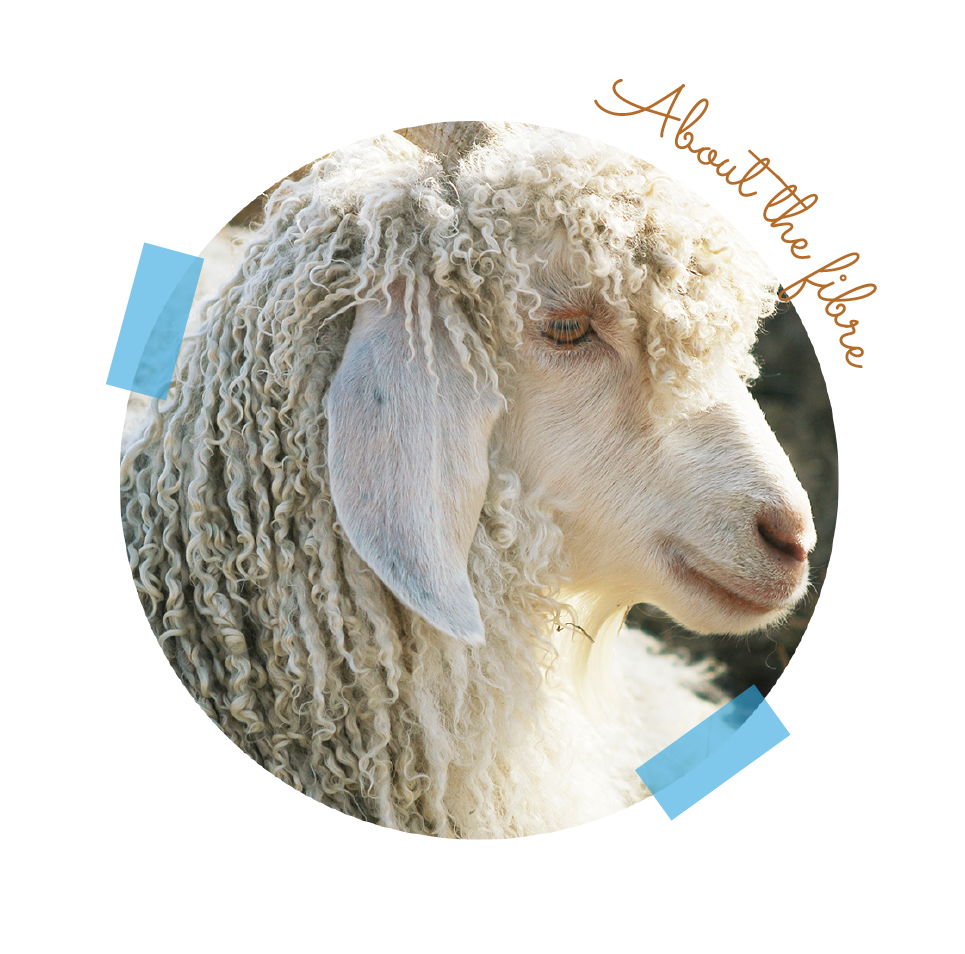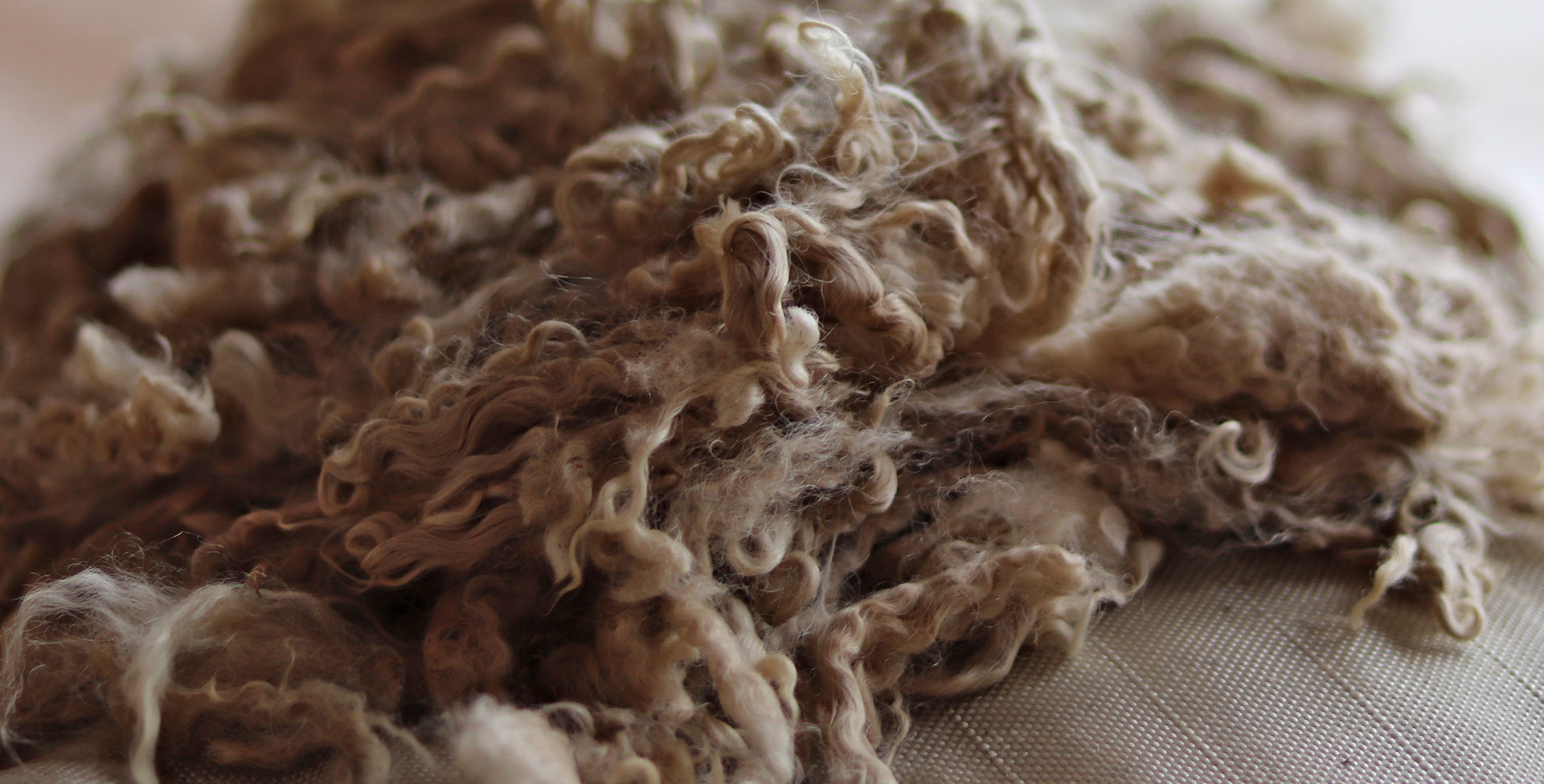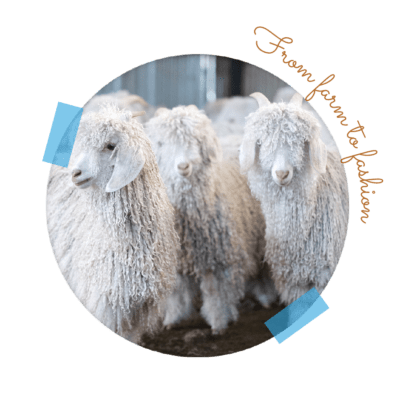Unser Mohair

ABOUT THE FIBRE. A symbol of luxury and exclusivity
MYPZ handmade luxury. Yet, with luxury comes responsibility. Our supplier is committed to ethical mohair production. They seek to maintain the highest industry standards to ensure a sustainable, profitable and continuously improving mohair industry.
It’s called the noble fibre, and sometimes the diamond fibre. Lustrous, resilient and offering exceptional colour reflection, mohair has become a symbol of luxury and exclusivity.
Mohair is the fleece of the Angora goat, and it’s one of the world’s most beautiful sustainable natural fibres.
Certifications of our suppliers and animal welfare
-

MULESING FREE
Mulesing is a surgical practice used in sheep farms that consists in removing a skin part of the perianal area of animals in order to protect them from infectious diseases transmitted by some fly larvae. This practice, still quite widespread among Australian producers, is invasive and very painful.
Some environmental associations have carried out awareness campaigns in order to protect animals, also offering various alternatives to this problem. For this reason, many producers declare that they only use wool from farms that guarantee certain standards of animal welfare.
-

HOW WE ENSURE ANIMAL WELFARE
For us, the protection and respect of every living being are of fundamental importance, we are committed to encouraging sustainable actions that minimize stress and discomfort situations. Our suppliers promote internationally recognised best practices to ensure animal health and welfare.
Animal welfare is defined according to Five Fundamental Freedoms: Freedom from hunger and thirst: free and constant access to fresh water and correct diet to maintain health and vigour. Freedom to discomfort: providing an appropriate environment with shelter and a resting area. Freedom from pain, unease and wounds: with rapid prevention, diagnosis and treatment. Freedom to express normal behaviour: with sufficient space, appropriate facilities and with the possibility of relating to animals of the same species. Freedom from fear and stress: ensuring conditions and treatments that avoid suffering, including mental suffering.
-

OEKO-TEX®
The STANDARD 100 by OEKO-TEX® is an international and independent certification system involving raw materials, semi-finished and finished products of the textile sector such as raw, dyed and finished yarns, fabrics and knits but also buttons, zippers and labels. The aim is to ensure a high level of product safety in order to protect the final consumer.
-

The Woolmark
The Woolmark logo is the world's best-known textile quality fibre brand, representing a long-term commitment between woolgrowers, mills, brands and consumers. The Woolmark logo has been applied to more than 5 billion products since its creation in 1964. The value of the Woolmark Licensing Brands is well established and highly regarded across the world in the apparel, interi or textiles and home laundry sectors. The Woolmark Licensing Brands provide consumers with assurance of fibre content and of quality and are backed by technical specifications far a wide range of wool products and wool care products. Stringent testing is carried out by independent authorised laboratories before the relevant Woolmark Licensing Brand logo can be applied.
South Africa is the biggest global producer of mohair, producing approximately 50% of the world’s mohair. Most of South Africa’s Angora goats are farmed in the Karoo area of the Eastern Cape.
Angora goats thrive in the Karoo, with its combination of hot, dry summers, cold winters and semi-desert vegetation. In the pursuit of perfection, their fleece has been refined through consistently high breeding standards and meticulous genetic selection. Angora goats are shorn twice a year and are not harmed in any way during the process.
This combination of best practice farming and best environment for Angora goats sets South Africa apart from other Mohair-producing countries. South African mohair is globally acknowledged as one of the finest natural fibres money can buy.
The added beauty of mohair is that it is a natural, renewable resource, providing a sustainable production chain between animal and human while contributing to the long-term prosperity of the Karoo region.

UNIQUE QUALITIES
Uniquely resilient, durable and beautiful.

HOWEVER, MOHAIR OFFERS MORE THAN EXCEPTIONAL BEAUTY AND LUXURY. THE FIBRE HOLDS A NUMBER OF RARE, NATURAL QUALITIES, INCLUDING:
– Lustre. Mohair’s natural lustre gives garments a silky sheen. It’s the ideal garment to wear day or night.
– Lightweight. Mohair fabric is luxuriously lightweight and renowned for its versatility, staying cool in summer and warm in winter.
– Dye-responsive. Mohair responds magnificently to dyes, retaining even the most brilliant colours over time.
– Climate control. Mohair breathes naturally, absorbing and releasing atmospheric moisture and controlling its own ‘climate’ to ensure optimal comfort.
– Durability. Because of its pliability, mohair is rated as one of the world’s most durable fibres.
– Crease-resistant . Products made from mohair have an innate elasticity, which ensures that they hold their shape and do not crease.
– Non-flammable. Mohair is virtually non-flammable, keeping you safe and chic all year round.
THE MOHAIR MARK
It is a symbol of authenticity and luxury that should be treated with respect and worn with pride
The Mohair Mark has been developed to help consumers select products that contain only the highest quality natural mohair fibre. Display of the Mohair Mark is a commitment to excellence. It is a symbol of authenticity and luxury that should be treated with respect and worn with pride.
THE PROCESS
From farm to fashion.
Shearing
Clipping the mohair fleece from the Angora goats twice a year, either by hand or with electric shears. The animals are not harmed in any way.
Classing
Sorting the mohair into various lengths, fibre diameter and quality types. Meticulous classing adds value to the product.
Scouring
Washing the mohair to remove excess dirt and oils.
Carding
The mohair fibres are positioned in uniform lengths and most of the vegetable matter is removed. A sliver or coil of mohair, called a ‘carded sliver’, is produced.
Combing
The remaining vegetable matter and shorter, irregular sized fibres are removed from the carded sliver to transform the mohair into the soft, luxurious Mohair ‘top’.
Spinning
Converting the mohair top into yarn. The top is spun into a yarn specified for structure, thickness (yarn count) and surface. Mohair yarns are often twisted or brushed (raised) for a fluffy appearance.




